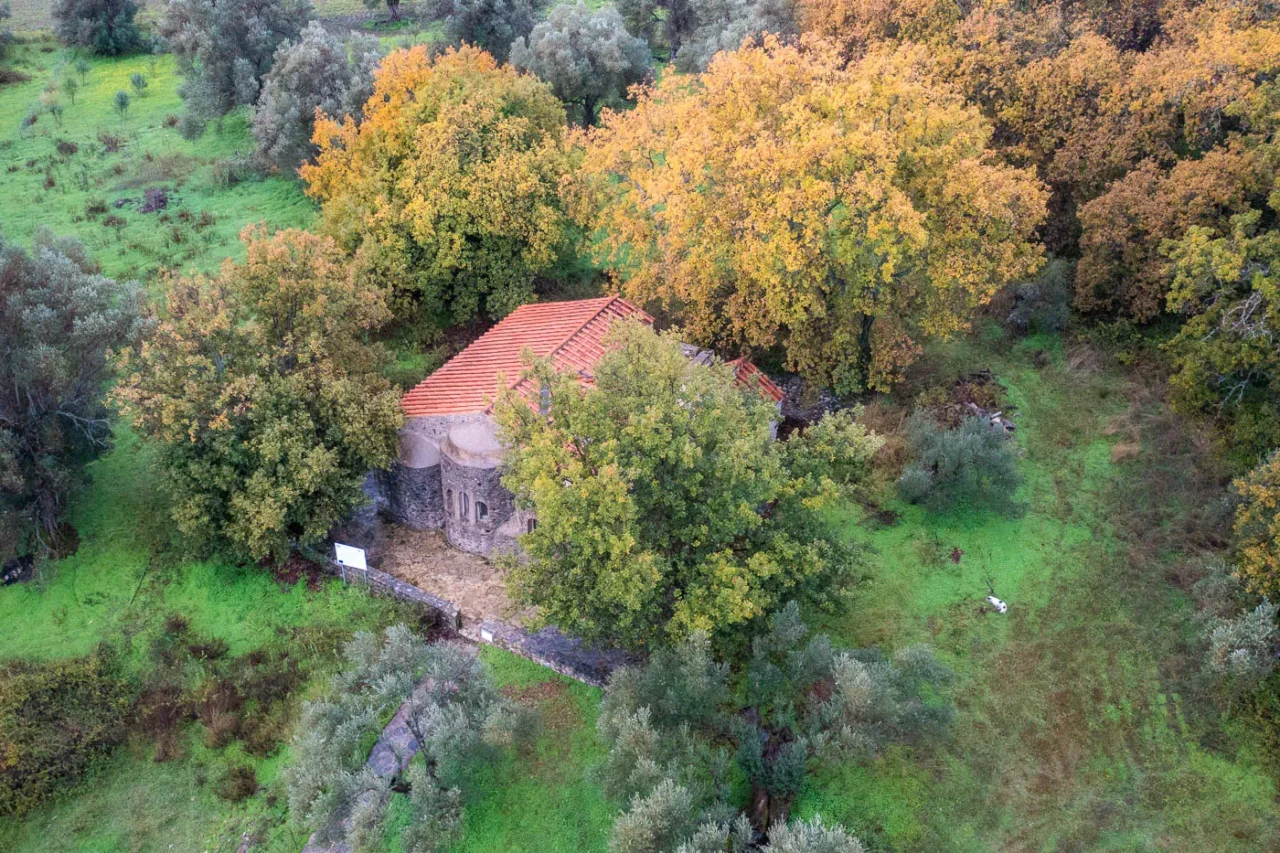
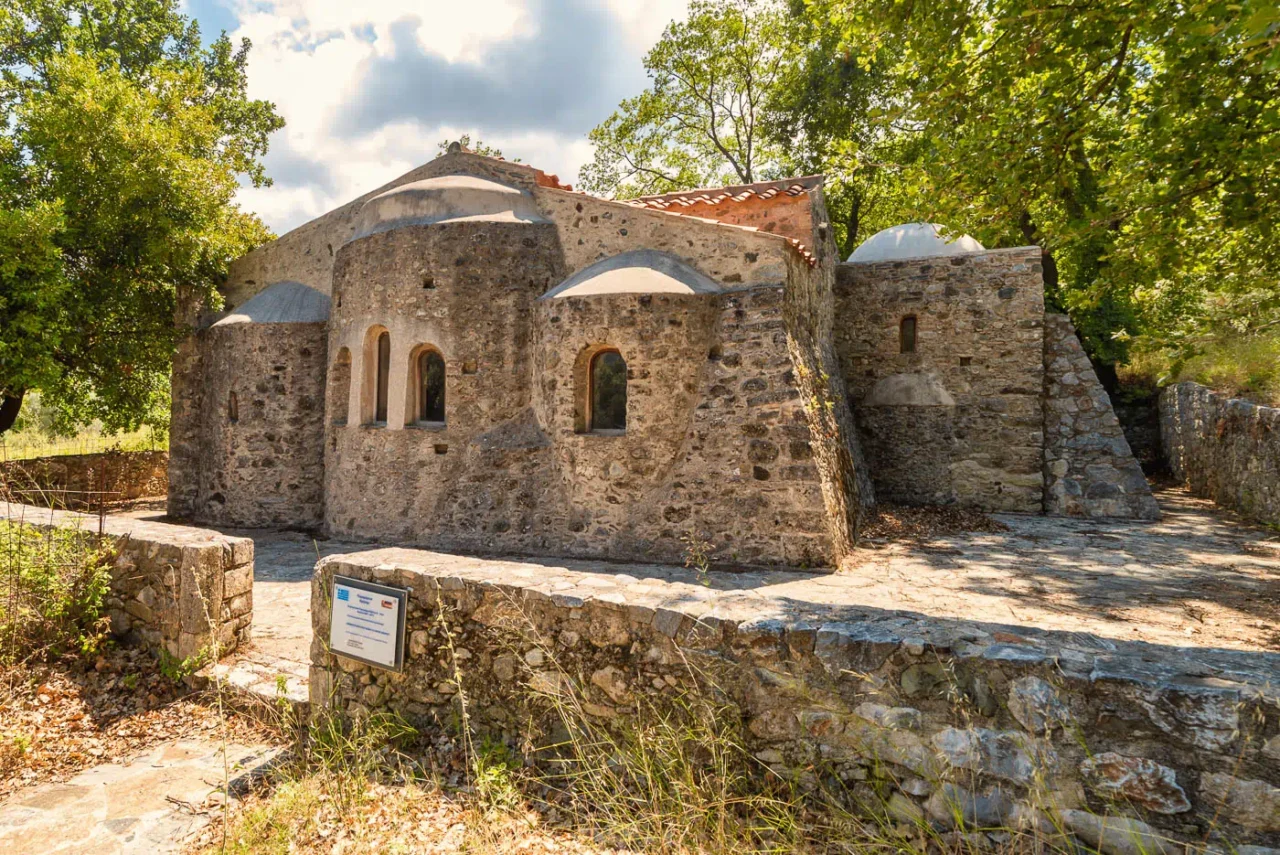
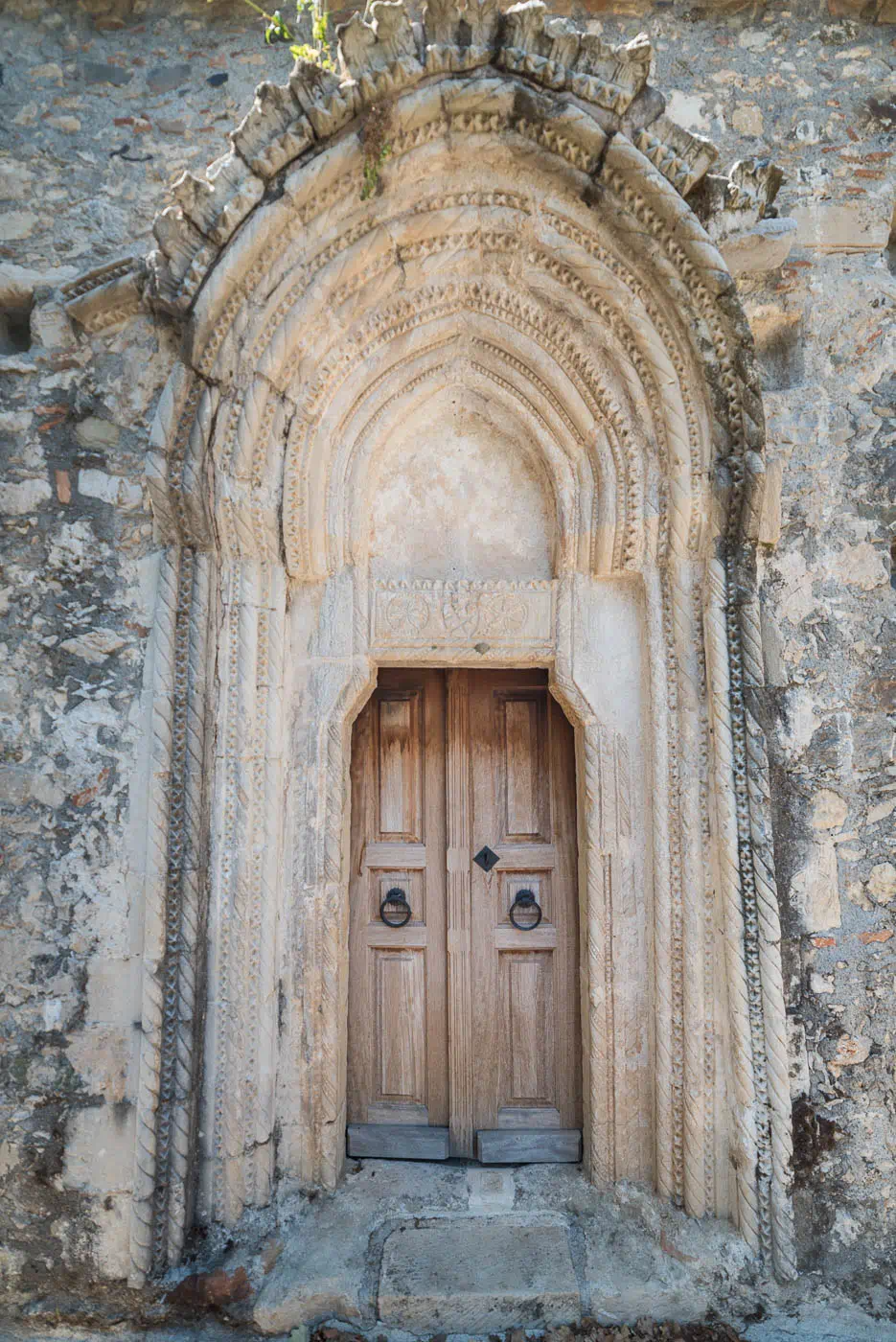
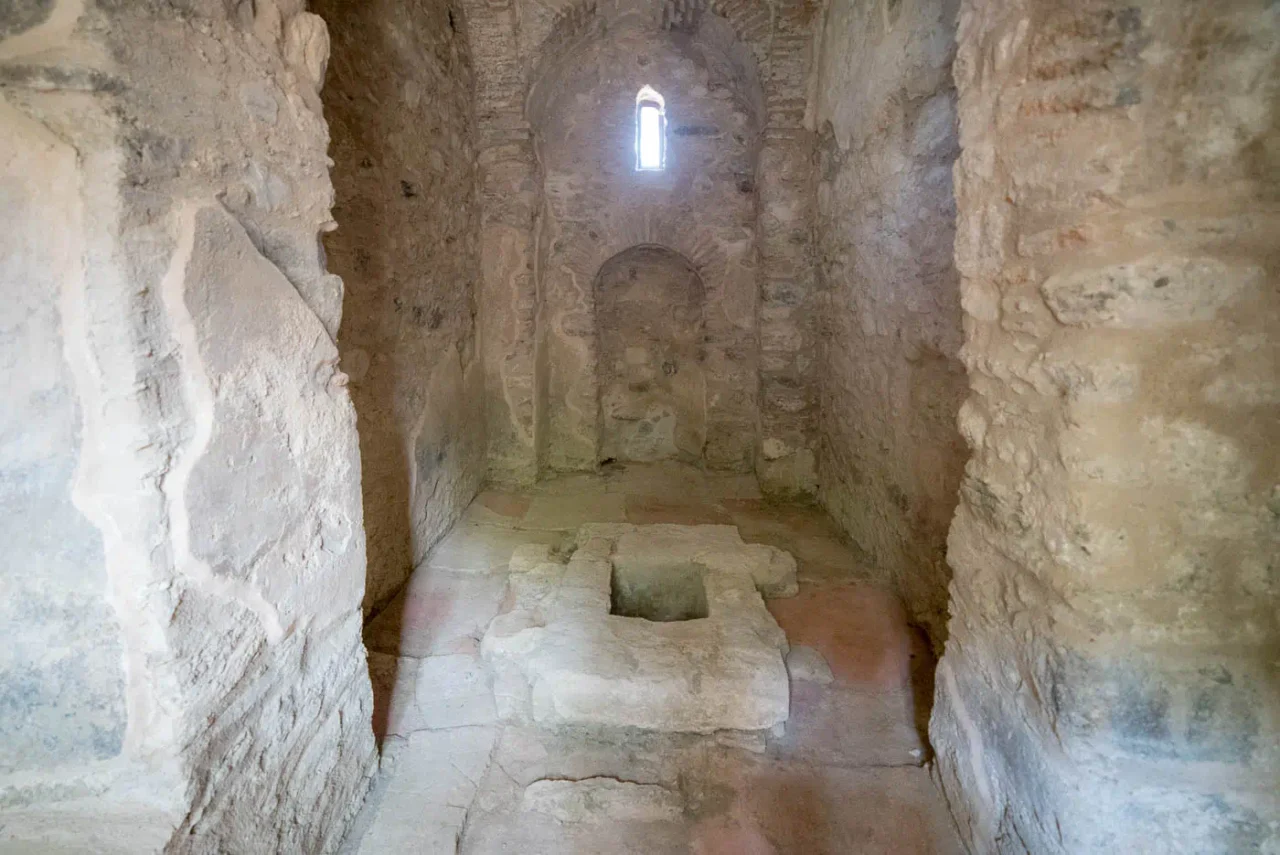
Panagia Kera: A Byzantine Masterpiece Amidst the Olive Groves of Amari
Hidden amongst the ancient olive groves near the village of Nefs Amari, the imposing Church of Panagia Kera stands as a testament to Crete’s rich Byzantine heritage. This 15th-century, three-aisled basilica was constructed on the ruins of a 13th-century cross-in-square church with a dome, which itself is believed to have been built on the site of an even earlier temple dedicated to Apollo.
Construction Period:
- Initial cross-in-square church: 13th century
- Current three-aisled basilica: 15th century
Location:
- Near the village of Nefs Amari, in the Amari Valley, Rethymno region, Crete.
- Surrounded by ancient olive groves and situated in an area with a high water table, as evidenced by the numerous drainage channels surrounding the church.
Historical Significance:
- The church’s dedication to Zoodochos Pigi (Life-Giving Spring) may be linked to the presence of water in the area.
- Remnants of the original 13th-century church, including the sanctuary, prothesis, diaconicon, and some frescoes (e.g., the Dormition of the Virgin on the north wall and the Ascension in the sanctuary), offer valuable insights into Byzantine architecture and art.
- The presence of the Kallergis family coat of arms on the southern entrance indicates the church’s connection to this powerful Cretan family during the Venetian period.
- The church served as the katholikon (main church) of a monastery that was under the jurisdiction of the nearby Moni Asomaton in the 17th century.
Current Status:
- The church has undergone several renovations and alterations over the centuries, resulting in its current form as a three-aisled basilica with a narthex and a small chapel.
- The well-preserved frescoes in the central part of the sanctuary, characterized by their strong linearity and conservative style, offer a glimpse into Cretan art of the 13th century.
- Despite recent restoration efforts, debris from the works remains in the surrounding area, highlighting the need for further preservation and promotion of this significant monument.
Additional Notes:
- The church’s location amidst ancient olive groves and its connection to the earlier temple of Apollo add to its mystique and historical significance.
- The presence of numerous ancient olive trees and pottery fragments in the surrounding area suggests a vibrant settlement existed here in antiquity.
- The church’s impressive stone doorway with its late Gothic decoration and the Kallergis family coat of arms is a testament to the artistic and cultural influences of the Venetian period.
Panagia Kera is a captivating destination for those interested in Byzantine art, architecture, and history. Its unique location, rich history, and well-preserved frescoes make it a must-visit site for anyone exploring the cultural treasures of Crete.
Access
Very good condition earth road.













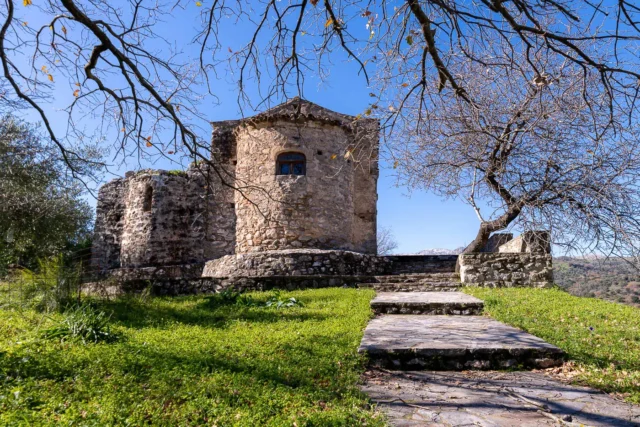

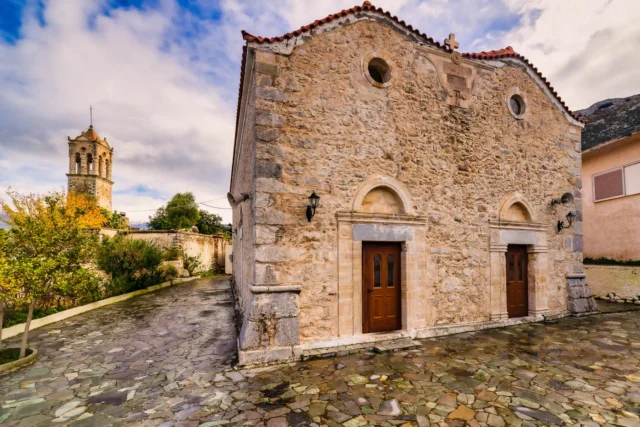
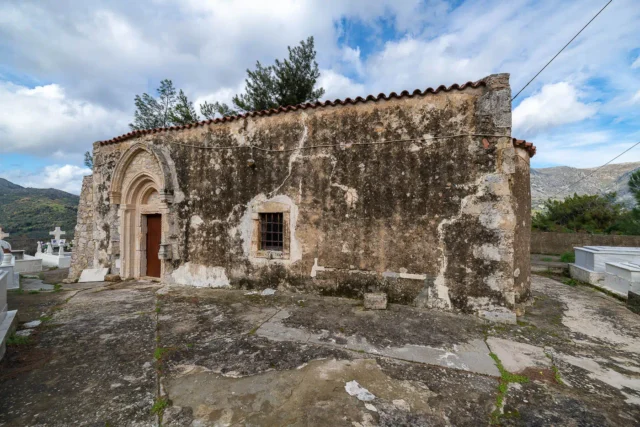
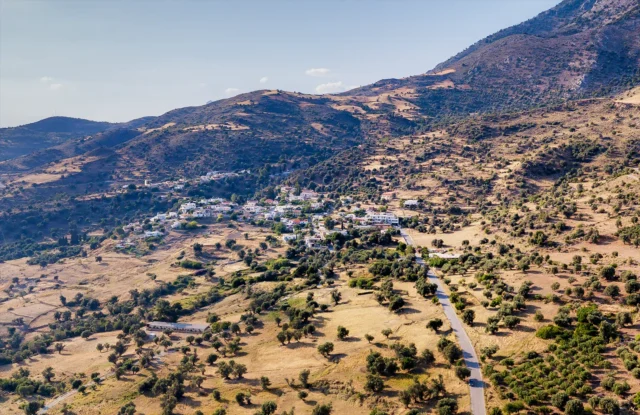

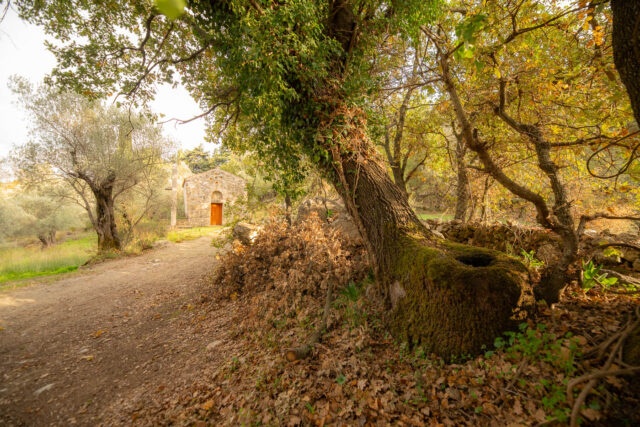

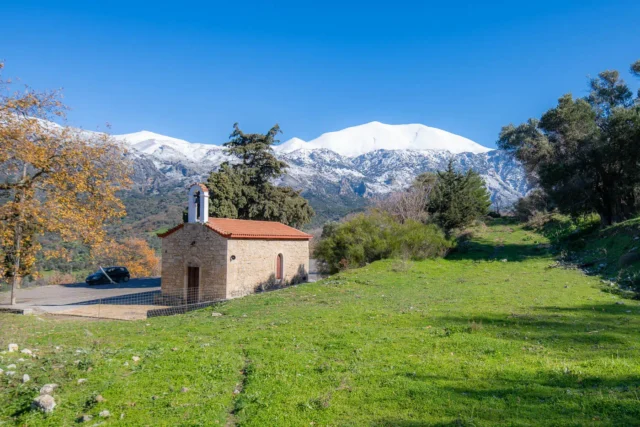

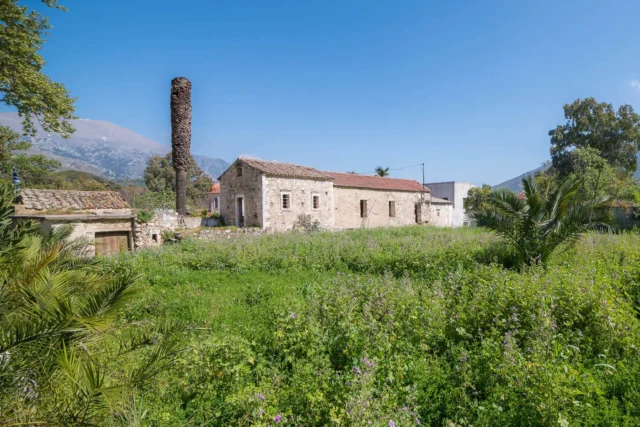

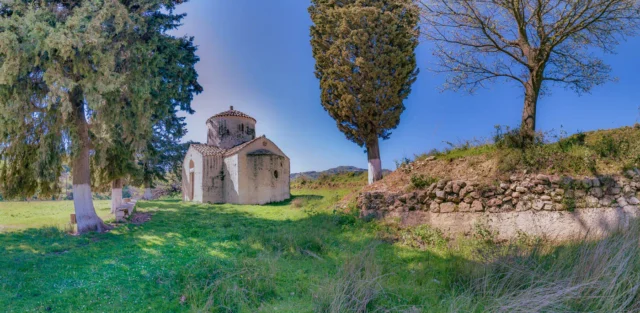
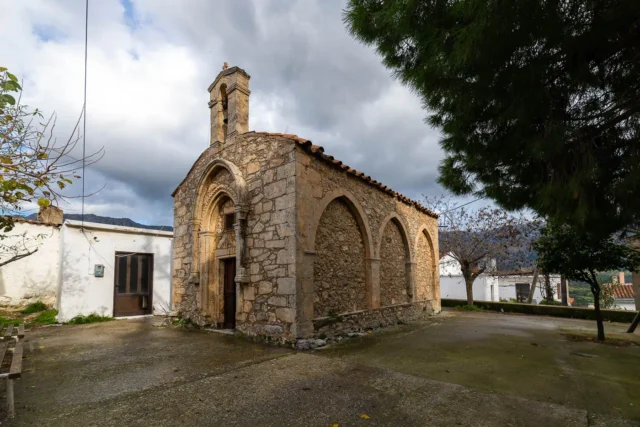
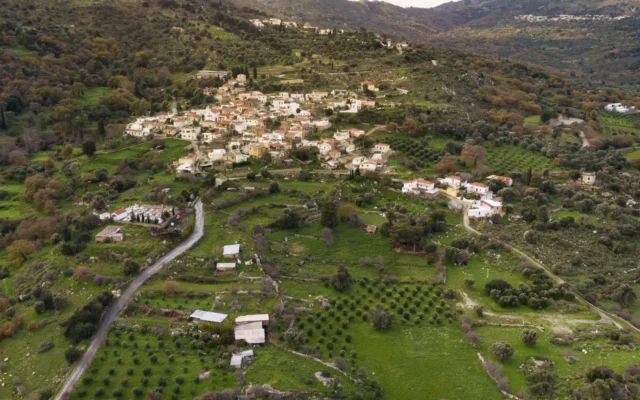
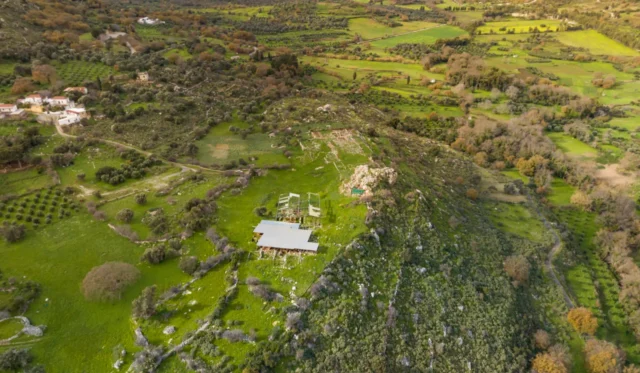

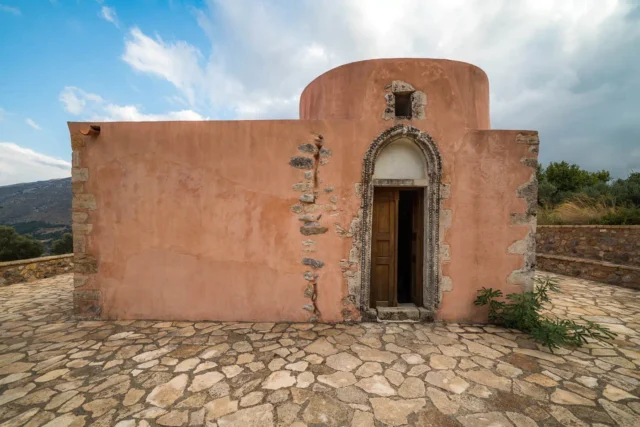


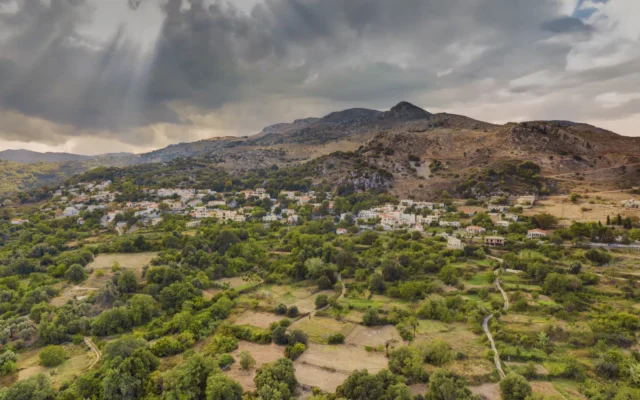
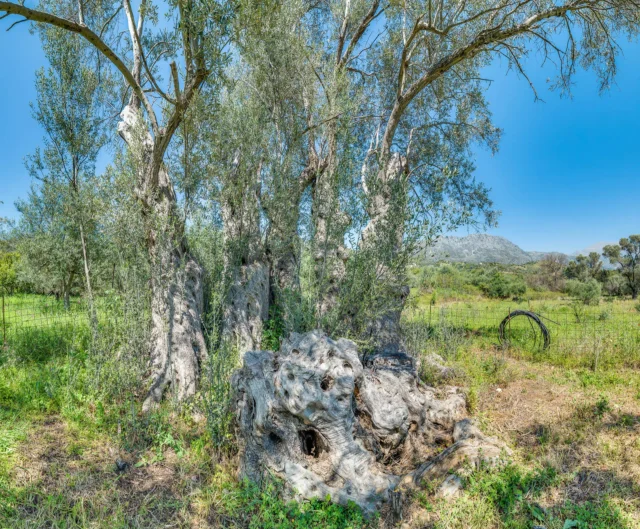
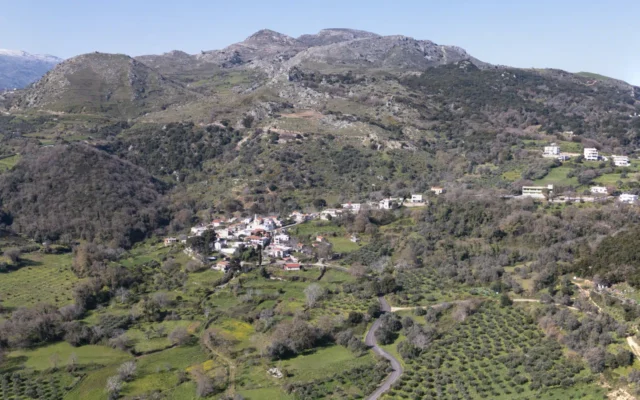
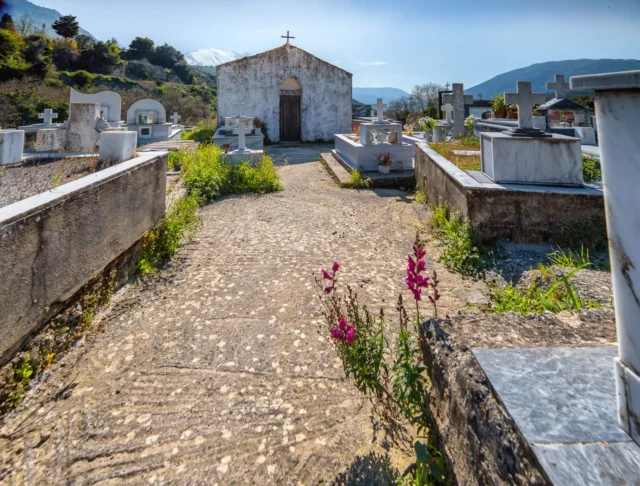
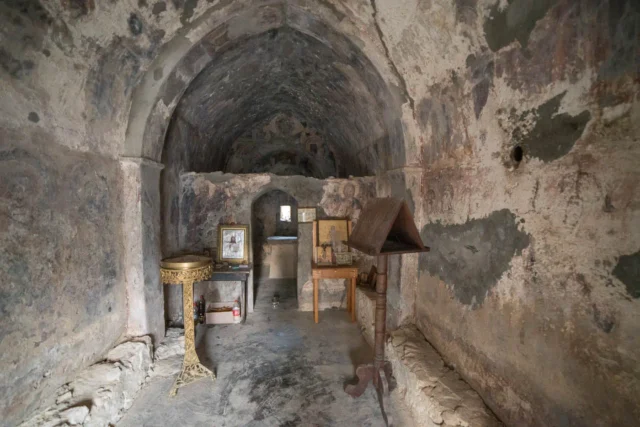

There are no comments yet.